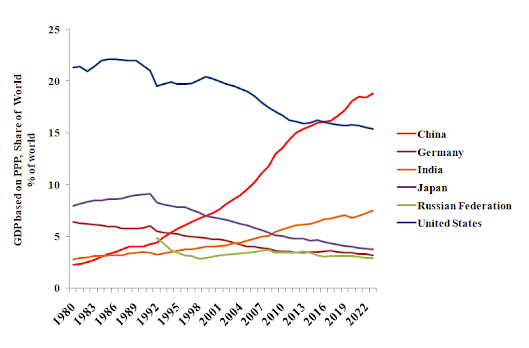Some Notes on the Speech Delivered by Prof. Anjan Chakraborty on ‘India Today in light of Neoliberal Economy’
Some
Notes on the Speech Delivered by Prof. Anjan Chakraborty on ‘India Today in
light of Neoliberal Economy’ at K.P. Basu Memorial Hall, Jadavpur University
as part of the Ranajit Chakraborty Memorial Lecture organized by 'Pratibhasya -
Ekti Fasibad Birodhi Swor' on 17th February, 2024
1. The development of the current
neoliberal economy is based on the triad of neoliberal globalization, global
capital and ‘inclusive development’. The circuits of global capital include supply chain, value chain
etc with global capitalist enterprise at the centre and labor at the nodes.
2. According to Foucault, neoliberalism is the exercise
of power based on the principles of market economy. This economic system is
characterized by free trade, global competition, free mobility of capital and
the voluntary/involuntary migration of labor. Here, individuals are to work on a
cost-benefit principle. In this system, the consumer and labour employer constitute
a mutual negotiating axis while the trade union is a ‘noise’ or distortion. Hence,
new technologies have been put forward to counter trade unionism.
3. Karl Polanyi in his ‘The Great Transformation’ has explained
labor, land and finance as fictitious commodity (that which are not produced but
can be sold; determination of their price is purely speculative) which can act
as ‘resource’. In the present neoliberal phase, the human body is also a
fictitious commodity (the concept of biocapital, bioeconomics, biopolitics).
4. To study the path of neoliberal development in India,
this discussion will consider the Indian economy as historically being a
mixed economy. The state has always been central with respect to the developmental
discourse of the Indian economy. The nature of the Indian state has changed
with time – from a planning state to an enabling stateA. Now, the market
and not the state allocate resources and takes pricing & output decisions. However,
the laws governing market competition are created and enacted by the state. The
state ensures property rights and defends the national border. In this sense, the
market cannot exist without the state.
5. Just like Protestant ethics was necessary for
industrial capitalism to thrive in Europe, a similar societal redesigning is
taking place in our country. Currently, India is in its own Weberian
moment i.e., at the historical conjecture of capitalist and Hindu nationalism. Naomi Klein, in her ‘The Shock Doctrine’, described the path
of neoliberalism as sudden ‘total privatization’. However, in India, contrary
to Klein’s doctrine, gradualism has been the path of neoliberal development,
i.e., the ruling bourgeoisie has tried to infest structural changes whenever
they got the chance. The neoliberal phase has experienced the Great Acceleration
through the expansion of telecommunication, transportation, robotics, IT, AI
etc. Investment on new algorithm systems has given rise to the gig workers.
6. During the dawn of neoliberalism, USA and China were
close to each other. Not anymore. The West gave birth to neoliberalism but the
East has benefitted from it with China and India becoming the growing superpowersB.
Asia is now the drum beater of capitalism. On the other hand, USA is currently
facing deindustrialization. Former US President Donald Trump rose against this neoliberalism
to protect the capitalist interests of USA.
7. Modi wants to restructure Indian economy with a new
form of circuits of global capital within a new geopolitical structure (leaving
out China from the supply chain), attract global capital from Indian and
foreign capitalists by demolishing existent labor laws, accelerate privatization
and subjugate working class & farmers. Therefore, Steve Bannon, chief
strategist of Donald Trump, has described Modi as the Trump before the advent of
Trump!
8. In India, major employment is seen in so-called unproductive
agricultural sector. This is a sign of rural distressC. Income gap
is widening in the countryD. These are the fruits of neoliberalism
in India.
……………………………
A. In many poor nations, when in doubt about the goodness
or badness of two or more adults voluntarily conducting an exchange, the government
stops them. An enabling state, on the contrary, does not interfere when in
doubt. There are many actions of individuals and/or groups that need to be
stopped for the welfare of society but the enabling state, by default, allows
rather than stop them, permits instead of preventing them. This is the altered conception of the state (Economic
Survey 2009-10, 24). [point noted from
the speaker’s slide]
C. % of GDP & Workforce in Agriculture:
D. "As of 2021, the top 10 percent Indian population group in terms of pre-tax income was estimated to hold over 57 percent of total income in India, whereas the bottom 50 percent group only made up just over 13 percent of total income. This reflected an even greater income gap compared to 2010". - Statista (https://www.statista.com/statistics/1273122/india-income-inequality-between-top-10-percent-and-bottom-50-percent-share/)





Comments
Post a Comment